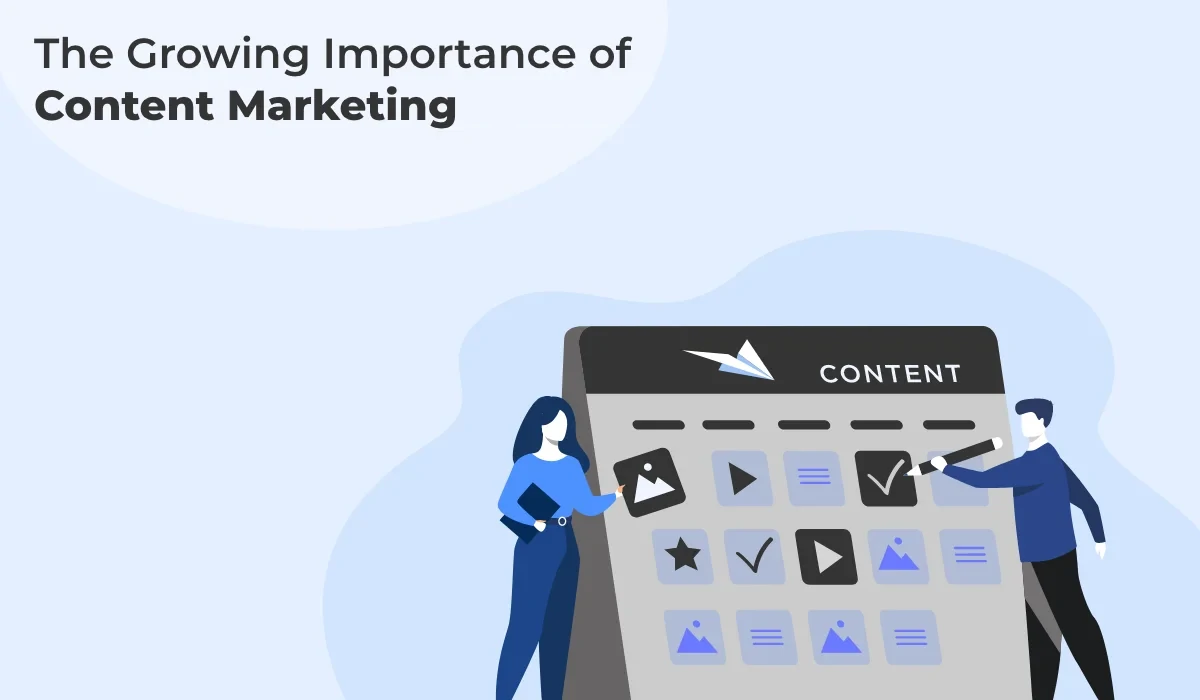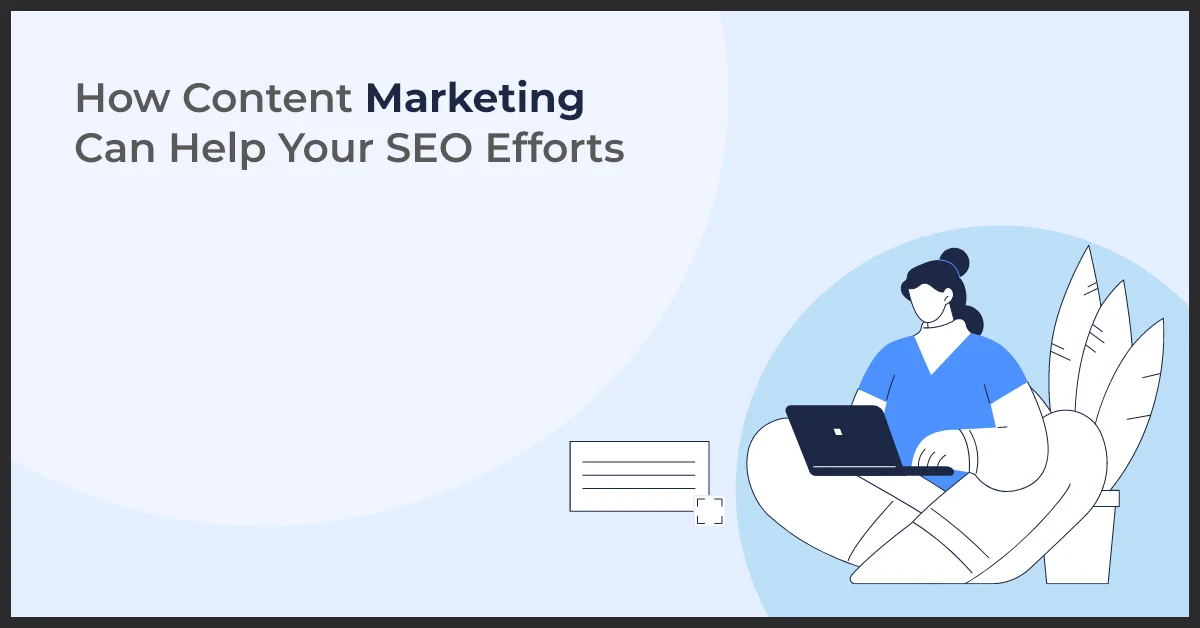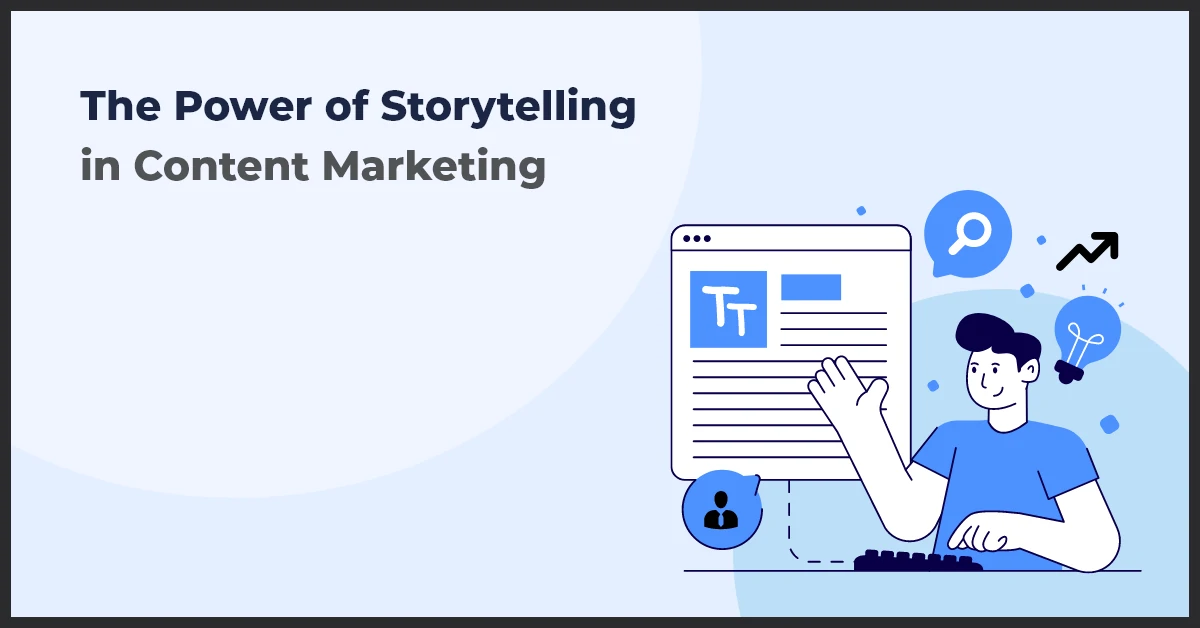The Growing Importance of Content Marketing

Published on: March 9, 2023
Updated on: September 25, 2024
2020 Views
- Content Marketing
13 min read
The only way to express a thought is through words.
The only way to reach your audience is by finding meaningful words that matter to them.
In short, the right content is what people want, which, when done with the proper pull, becomes a successful example of content marketing.
Content marketing involves creating and sharing various types of written and visual content online to draw in more potential customers for your business. Examples of such content can include blog posts, ebooks, infographics, videos, and other similar materials.
However, publishing content without a well-planned strategy is not enough to get the desired results. To succeed in content marketing, it is essential to carefully design and optimize your pages, videos, ebooks, and posts for your specific target audience so that they can find you organically instead of you having to reach out to them directly.
So,
What is content marketing?
Is content marketing a new phenomenon that has become prominent with the growth of the Internet and social media?
How does content marketing work in today’s digital environment?
Content marketing is an inbound marketing strategy that seamlessly brings storytelling as part of your product’s outreach. The old-fashioned outbound strategy that interrupts your target audience no longer resonates with or converts them as effectively.
Let’s find all your answers right here in this blog.
Why is content marketing important?
Content marketing remains crucial for businesses to attract and engage audiences. With evolving digital trends, content personalization, short-form videos, and high-quality, research-driven materials are key strategies. Companies must focus on delivering valuable, timely, and empathetic content to build strong relationships with consumers. Moreover, content-powered revenue and the use of AI and data-driven insights allow businesses to optimize their efforts and stand out in the competitive landscape.
Content Marketing: A Historical Overview
Content marketing is nothing new. Benjamin Franklin did it. So did Johnson and Johnson or Edison’s Electric Lighting Company. How? By promoting information or material related to their product.
Franklin began publishing Poor Richard’s Almanack to promote his printing business in 1732, not unlike the Edison Electric Lighting Company Bulletin, a bespoke publication that began in 1882 to spread the word about the benefits of electricity.
In 1888, Johnson and Johnson also began a publication called Modern Methods of Antiseptic Wound Treatment, around the same time that their bandages were launched, to help doctors with any information related to the bandages and their usage.
The Internet has brought this kind of marketing to the fore again. Relevant information that fills in the knowledge gaps for consumers is the new strategy of businesses as they draw the audience's attention to their own products.
Content Marketing Today
Content marketing has a multi-faceted presence today. The means of disseminating information is the same, i.e., the Internet, but how it is relayed is an evolving paradigm that needs to be tailored to the company’s business environment as well as the channel through which it is disseminated.
The key lies in personalization. One-size-fits-all doesn't fit the bill as it used to a few centuries ago. For example, a company selling hair products for curly hair will pay more attention to its product when that business begins creating content by addressing the special care needed for curly hair.
There are many ways that content travels across formats/channels today, including:
Short-form video: With an average viewer watching 19 hours of video content every week, the short-form video is going to be the format to tell your product story. It has become a popular medium for brands to use in B2B marketing. Platforms like TikTok, Instagram Reels, and YouTube Shorts are gaining popularity due to consumers' shorter attention spans.
In fact, 80% of all mobile data traffic is now made up of short-form videos. Short-form video content is also beneficial for brands, as it allows them to create more content in less time, and viewers are more likely to engage with a video that is concise and gets to the point quickly.
Empathy and human-focused content: The language of formality and sounding business-like is out as the focus is now on empathy and developing that human connection between brands and their consumers.
To effectively engage with your audience, avoid producing content that is focused on your business or feels detached from your customers. It's crucial to create relatable and empathetic material that connects with your audience on an emotional level. Building authentic relationships with your followers is the key to success, as nearly 95% of consumers value genuine and transparent brands, and 75% are willing to pay more to support them.
In other words, avoid using hard sales pitches and sales language, and instead, find your natural voice and speak to your customers as a human-to-human. If necessary, adjust your brand guidelines or tone of voice to achieve this.
Strategic SEO: The only way to hack the Search Engine Optimization (SEO) game is to be authentic in your content. Write as a human, for a human. Why? Because Google and other search engines are getting smarter at gauging content as well.
Today, many marketers are concentrating on producing high-quality, relevant content that caters to their customers' needs and allowing Google to elevate their content to the top of search results organically. The strategy involves using strategic keywords to appear on the first page of search results and relying on the content's quality to speak for itself.
Rather than creating content solely to rank for a specific keyword, it is now essential to establish authority on a topic by becoming the best resource for it. The emphasis is not only on achieving a high URL ranking but also on improving click-through rates and engagement metrics, which are the factors that search engines value most.
Content-powered revenue: Content is no longer just a tool for branding or attracting customers to your sales funnel. Brands now see content as a means to generate revenue, transforming them into media companies and influencers rather than just brands.
Businesses should treat content creation as a distinct part of their operations that can create revenue streams in its own right. For example, brands can monetize their content through membership fees or by participating in revenue-sharing programs like the TikTok creator fund. By creating high-quality content, businesses can find new opportunities to generate revenue beyond their traditional business model.
High-quality researched content: In a time and age when misinformation thrives, consumers seek high-quality, well-researched content. Like infographics, which provide an engaging visual summary of immense amounts of information. Although it is acceptable to create content based on research conducted by other companies, having in-house resources can make your content more unique and help it stand out. Additionally, when other sites link to your research as a source, it can significantly enhance your SEO efforts and domain authority.
One way to develop original research is to create white papers or conduct surveys for your brand. While it can be a challenging task, 48% of marketers believe that research reports generated the most significant results for their content marketing efforts in 2021. Therefore, investing in original research can be a highly effective strategy for creating valuable content and enhancing your brand's reputation.
Data, AI, and automation: The evolving humanized, data-driven technology of today has made a lot of tools available for content generation. When you think of a blog piece like this one, ChatGPT comes to mind immediately. That’s just one facet of automated technology.
Technology can help you collect a vast amount of data to personalize content in a highly targeted way, leading to better results. Artificial intelligence (AI) can supplement existing content and generate new material, making it more efficient for marketers to produce more content. While AI may not be capable of creating all original content, it can be a useful tool to generate additional content in a shorter time frame.
Automation is also an effective way to streamline content production and tasks. Tools like IFTTT or Zapier can automate tasks like video captioning and push content tasks around in your project management software.
The dominance of podcasts: The podcasting industry has already experienced a significant surge, but it continues to expand each year. In 2021, American consumers listened to a total of 15 billion hours of podcasts. Podcasts have also proven to be highly effective in driving sales, with 60% of listeners indicating that they searched for a product after hearing about it on a podcast.
As with other trends in content marketing, it is crucial to view podcasts as a means of delivering value to your customers. Rather than solely focusing on sales pitches, it's important to offer informative or entertaining content that keeps listeners engaged.
Podcasts are still the primary audio content marketing trend, although this may change. Live chat rooms, like Twitter Spaces, provide a live version of podcasts. Meanwhile, the use of platforms like Clubhouse and Discord is rising, emphasizing the significance of live audio content marketing.
Step-By-Step Guide for Content Marketing
Now that you know how to use content marketing for your business, here are the steps you need to follow to develop an effective content strategy.
Step 1: Set SMARTIE Goals
Set goals specific to your business that complement your overall marketing and company goals. Some examples include boosting revenue, improving brand loyalty, increasing customer engagement, etc.
Step 2: Decide Your KPIs
Next, you need to set some Key Performance Indicators (KPIs) for your SMARTIE (Strategic/Specific, Measurable, Achievable, Relevant/Realistic, Time-bound, Inclusive and Equitable) goals. A KPI is a quantifiable data point that can help measure your performance against a goal.
Step 3: Decide on the Content
Decide the content type you want to align with your SMARTIE goals and KPIs. To get your goals right, consider your target audience and buyer personas.
Step 4: Choose Your Content Channels
After selecting the type of content you want to market, determine the channels. This involves deciding where to share your content and where it will reside and be distributed.
Step 5: Allocate a Budget
Determine your budget by considering the nature of the content you produce and the channels through which you promote it.
Step 6: Create and Distribute the Content
Develop and disseminate your content in a way that enables your target audience to access it and take action. To maintain a regular content production and distribution schedule, make use of an editorial content calendar or a social media calendar. This will help your team stay organized and plan content releases.
Step 7: Analyze and Gauge Results
The final step is to evaluate and quantify the outcomes of your content marketing campaign to identify any opportunities to improve your efforts and target more audience members. Analyzing your SMARTIE goals and KPIs will help you assess the effectiveness of your content marketing strategy.
Features of an Effective Content Marketing Strategy
Provide Value
Content marketing is not just about promoting the features of your products or services to persuade readers to become customers. Instead, it's essential to offer valuable information that enables your customers to perform tasks more effectively, like increasing the profitability of their business or streamlining their morning routine.
Regardless of the specific scenario, the goal is to produce content that provides solutions to your customers' most pressing needs. Although your product may serve as a solution, it is recommended to avoid excessive product promotion unless it's a dedicated product page. Instead, mention your product only when it's relevant and makes sense within the context of the content.
Target Audience at Every Buying Journey Stage
Besides delivering value and addressing your customers' needs, targeting the appropriate stage of the buyer's journey in each piece of content is also essential.
The buyer's journey typically consists of three stages: awareness, consideration, and decision. During the awareness stage, buyers are in the initial research phase and becoming acquainted with their problem. In the consideration stage, they are exploring potential solutions to their problem. Finally, in the decision stage, they are on the verge of selecting a provider or product to solve their problem.
Suppose you are writing a post about your product called "What” is [Y]?" In that case, the reader is most likely still in the awareness stage and merely researching a suitable solution to their problem. Therefore, pushing your product or service at this point is not appropriate.
On the other hand, if you are creating a product page, the reader has probably done their research and is now considering your product as a potential solution. In this case, you should emphasize your product's unique selling points and value proposition while distinguishing it from the competition. It's crucial not to hold back on highlighting your product's or service's most valuable features.
Create a Consistent Brand Voice and Image
Whether you're creating a blog post, webpage, or ebook, it's essential to establish a consistent brand identity instantly recognizable to your visitors. Your brand voice must be consistent throughout your content, even if multiple people create it.
Develop both a writing style guide and a brand style guide to achieve brand voice consistency. These documents will help ensure that your brand visuals remain consistent across all platforms and devices while your brand tone and voice remain consistent across all written communications.
Once you have developed these guidelines, you should distribute them to your in-house or freelance content writers and designers. This approach will result in more cohesive and consistent content marketing, establishing you as a reliable resource and helping elevate your professional image.
Produce Timely and Engaging Content
Suppose your customers typically plan their finances as a finance startup at the start of the year. In that case, you should create a blog post in January that provides information on budgeting quarter-over-quarter to prevent clerical errors and avoid overspending.
At the end of the post, you can include a call to action to check out your software or offer users a template they can download after providing their email.
This is a perfect example of timely and engaging content marketing. Capitalize on your customer's behavioral and spending patterns throughout the year. By publishing blog posts and offers that meet their needs at the right time, you can be ahead of the competition and publish similar content later. Sometimes, being first is all you need to win over a customer.
Conclusion
Content marketing is nothing new. It has been a feature of the historical marketplace and has found new relevance in the noisy, cluttered space of the Internet. If you are already not developing content for marketing, it is about time you start doing so. Growth Natives can help you in this journey. Mail us at info@growthnatives.com or call us at +1 855-693-4769 to learn more about how content marketing can work effectively for your business.
Sources:



